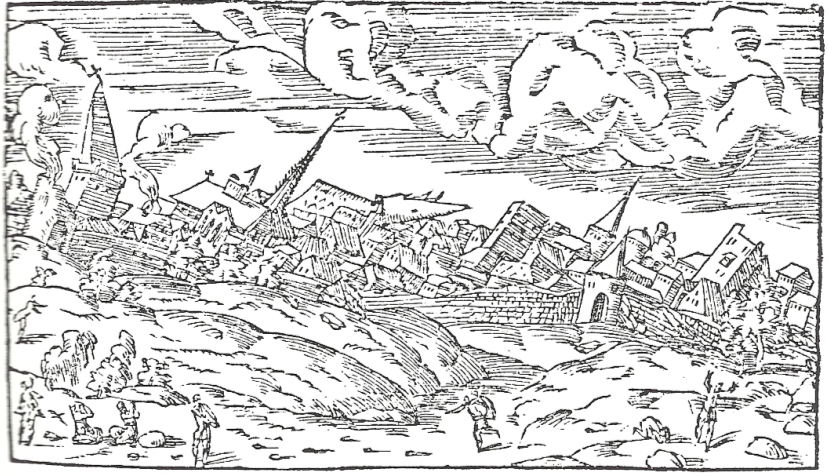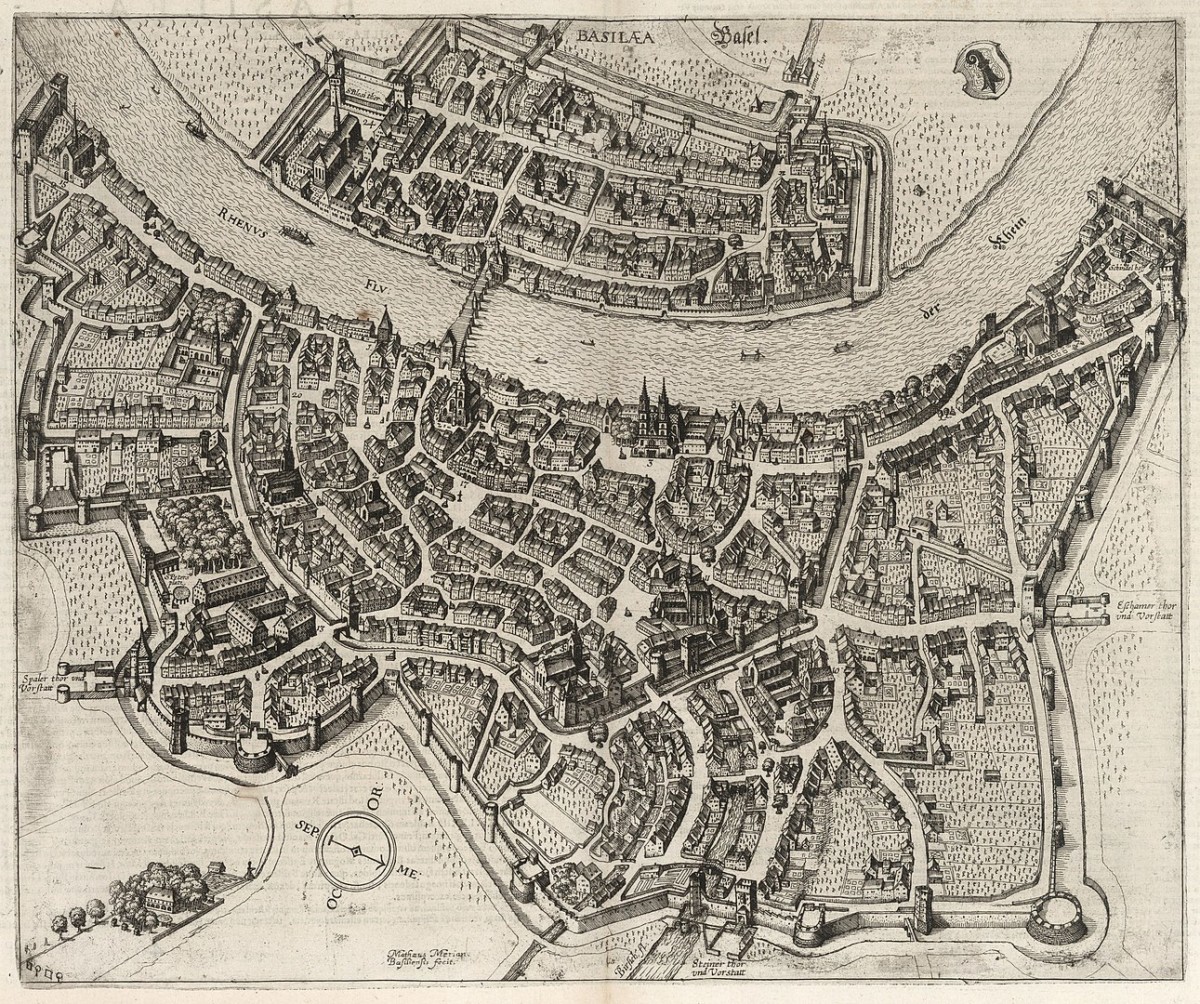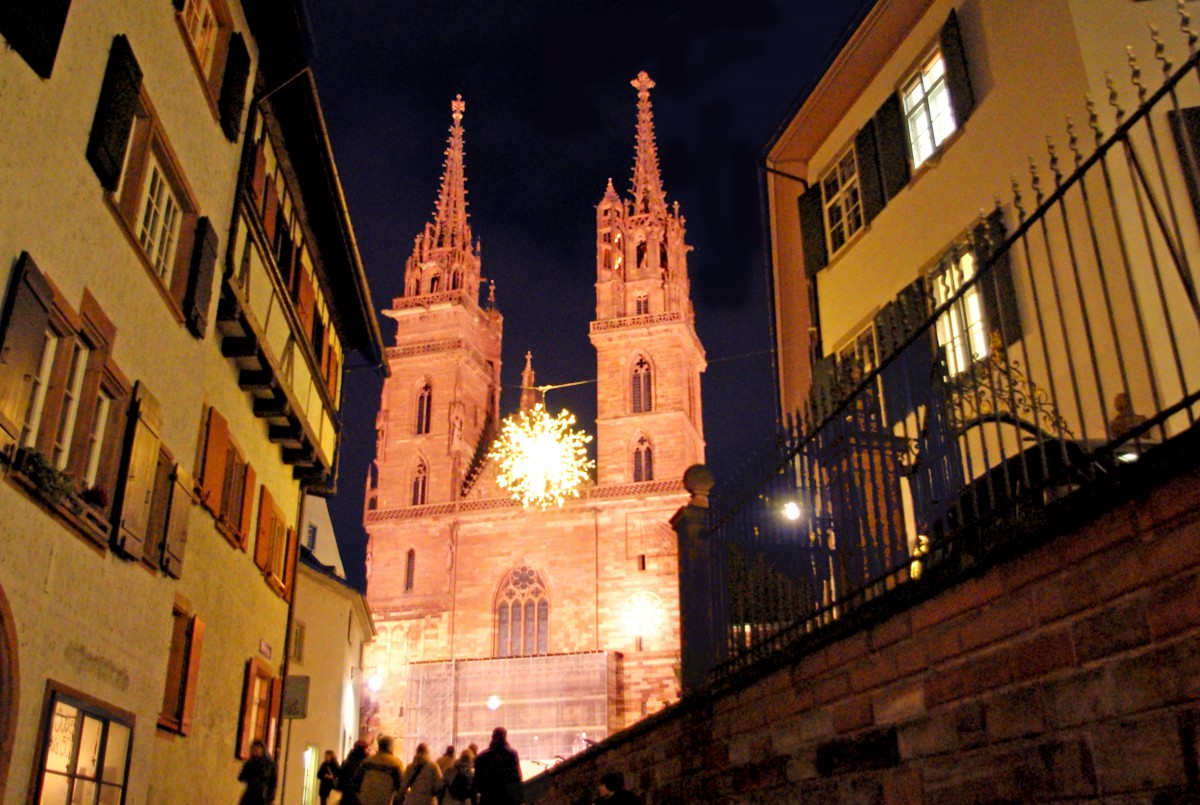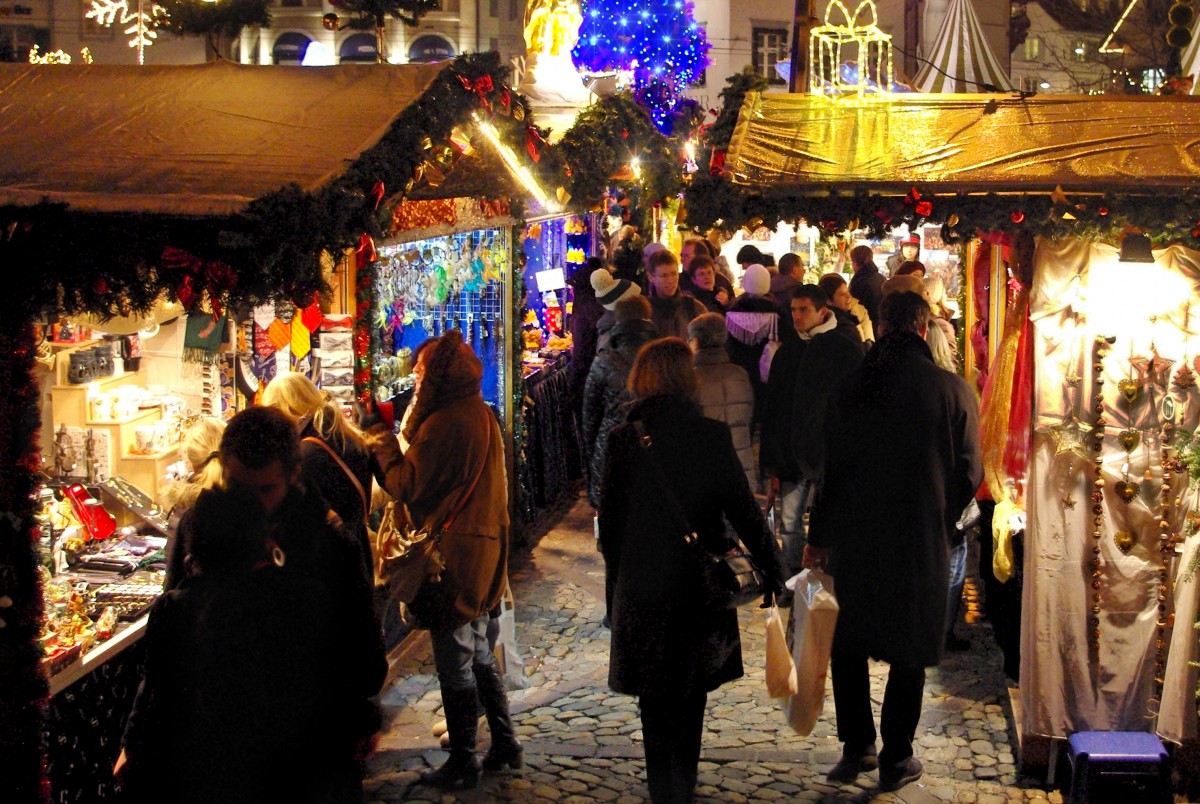Almost 700 years later, it is still being talked about. The 1356 Basel earthquake left a lasting impression on the Upper Rhine regions of Alsace, northwest Switzerland and the south of the Black Forest. Many seismologists and scientists consider the Basel earthquake of 1356 to be one of the strongest earthquakes north of the Alps. The traces of the disaster are still visible today. This article is a short investigation of this exceptional and destructive seismological event!
The story of the 1356 Basel earthquake
Today is October 18, 1356.
It is St. Luke’s Day, and a beautiful autumn day is ending.
But at 4 p.m., the ground began to shake.
In Basel and the surrounding villages, people leave their homes in panic.
What was going on?
The disconcerting shaking continued into the evening and even after dark.
In the middle of the night, another tremor occurs, waking everyone up.
The earthquake was incredibly strong and intense.
It was unprecedented in Basel and the region.
The earthquake became stronger and stronger, and suddenly screams could be heard everywhere.
Houses and city walls collapsed.
Not a single stone building escaped destruction, partial or total.
The Basel Cathedral also collapsed in part. The western portal, the upper parts of the nave, the towers of the choir, everything was on the ground!
But it was a fire that soon became the next scourge.

A devastating fire
A fire broke out, uncontrollable.
It spread to the cathedral, setting fire to the bell tower in which the big bell was located and destroying it as well as the precious organs.
The half-timbered houses, which had valiantly resisted the seismic tremors, fell prey to the flames.
The inhabitants, powerless and distraught, tried in vain to extinguish it.
It took them three days to put it out.

Finally, the last calamity was the river Birs. Destroyed buildings had blocked the water and the river poured into the cellars. The very places where the Basel inhabitants had stored their provisions. Cereals, vegetables, fruits, wines… everything was lost.
Some people had been able to escape the city, settling in makeshift huts in the fields, and for the luckiest, in the farms.
The city is now just a pile of ruins.

An estimated 300 Basel citizens died, most of them buried under the rubble or burned in the fire.
The historical context of the 1356 Basel earthquake
As mentioned, the 1356 Basel earthquake made a lasting impression due to its intensity. It is associated with the equally devastating earthquake in Lisbon in 1755.

However, Basel and its surroundings are not the first time an earthquake has occurred.
- As early as 1348, the city experienced a violent earthquake.
- In the middle of the 14th century, the “Black Death” hit Europe. It affected Basel from 1348. The pandemic caused the death of a quarter of the population, which was enormous for the time.
- Finally, the earthquake took place in the middle of the long Hundred Years’ War, although the city of Basel remained outside the conflict, which was mainly between France and England.

But what happened?
Seismologists have suggested that the Basel earthquake had no less than 12 tremors in the space of 48 hours, between October 18 and 19, 1356.
It is estimated that its hypocentre was between 1 and 15 km deep.
The epicentre of the earthquake was not in Basel itself, but about 10 km south of the city, in the Dornach region, east of the Blauen mountain.
Scientists estimate the Basel earthquake to have a magnitude of 6.2 to 6.7 on the Richter scale.
According to scientific sources, the destruction extended to a radius of 15 to 30 kilometres around Basel. Many castles and churches were completely destroyed. This was the case for the castles of the Sundgau, including the Landskron Castle.
It is estimated that 300 people died in Basel and between 1000 and 2000 in the whole region.
How far was the Basel earthquake felt?
It is also assumed that the shock wave of the Basel earthquake was strongest between 15 and 30 kilometres around Basel.
But the earthquake of 1356 was felt far away from Basel.
In fact, there are chronicles of the natural disaster in :
- Switzerland (Bern, Zurich, Lucerne)
- Germany (Freiburg-im-Breisgau and up the Rhine to Constance).
- Alsace (Mulhouse, a city geographically close to Basel, Colmar, Strasbourg)
- France (in Lorraine at Metz or Nancy, at Besançon, at Dijon, in Champagne and even in Paris).
The seismologists who studied the Basel earthquake affirm that it was not the “earthquake of the century”.
Worse, it was the “earthquake of the millennium”!
What if the earth shook again in Basel?
Basel is located south of the Rhine Gap, which stretches along the Rhine to Mainz, through Freiburg-im-Breisgau, Colmar, Strasbourg, Karlsruhe and Mannheim.
It is a region subject to tectonic movements in which earthquakes of varying intensity can occur.

Indeed, the Rhine Graben continues to grow steadily between the Vosges and the Black Forest, which may give rise to fears of an earthquake of the same intensity as that of 1356.
According to a seismic exercise reported by the website Rutsch, an earthquake similar to the one in Basel in 1356 would cause today :
- A human toll of 1,000 to 6,000 people
- 60,000 people would be injured to varying degrees
- 1.6 million people homeless in the short term
- 50% of buildings damaged
- 45 to 90 billion euros of material damage
Thus, the Basel earthquake resurfaces in the local media at every major earthquake. The French media even took up the subject during the Fukushima disaster in Japan.
The French nuclear authorities stated that the great Basel earthquake had been taken into account in the construction of the Fessenheim nuclear power plant.
In the 1990s, there were no less than 4 nuclear power plants in the Rhine region, from Constance to Mannheim… not to mention the chemical plants. Let’s hope that this beautiful land will avoid ruin during the next millennium earthquake!
For more information on the 1356 Basel earthquake
Reference sites
- The site of the Strasbourg seismology museum
- Excellent article from the astronomy club of Wittelsheim
- The page on the earthquake at Rutsch.eu
- The Wikipedia page on the Basel earthquake
- Do you know the Basel Christmas market, the biggest in Switzerland?

A Pin for Pinterest

Do you know more about the Basel earthquake of 1356? If so, tell me all about it below 🙂




